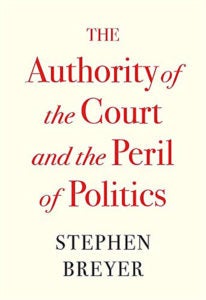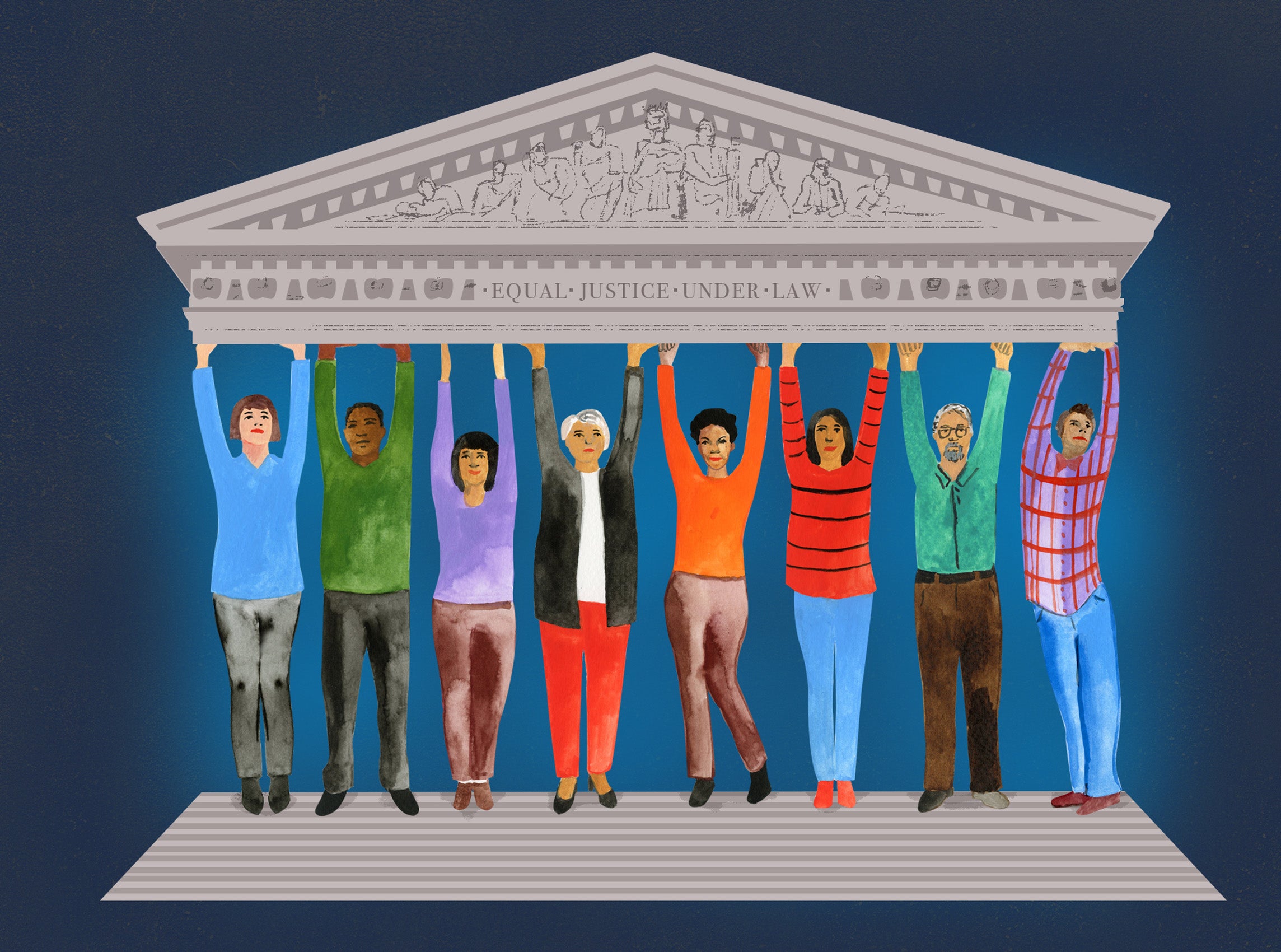The chief justice of the Supreme Court of Ghana visited the Supreme Court of the United States several years ago and asked why the American public abides by the U.S. Court’s decisions. It’s an important question because any tribunal’s power depends on the public’s willingness to respect its decisions, writes Supreme Court Justice Stephen Breyer ’64 in his book “The Authority of the Court and the Peril of Politics” (Harvard University Press). Breyer (who on Jan. 27 announced he would resign at the end of the term) also explores how the Court can continue to maintain its vital role as a check on the rest of the government and argues against structural changes like increasing the number of justices on the Court while defending the justices against charges that their opinions are driven by political ideology.

Adapted from the Scalia Lecture that the justice gave at Harvard Law School in April 2021, the book delves into historical decisions of the Court that he notes were not always followed, despite the fact that the Marbury v. Madison decision in 1803 embraced the norm of judicial review. For example, when the Court determined in 1832 that the Cherokee Indians had the legal right to control their territory in Georgia, the state simply ignored the ruling. The Court’s authority grew with the Brown v. Board of Education decision, as it provided a catalyst for President Eisenhower to enforce integration with federal troops, and for civil rights leaders to fight for equality. Respect for the Court’s rulings became “virtually habitual,” he writes, exemplified by the acceptance — even by those who disagreed — of the controversial Bush v. Gore decision.
Yet the Court’s authority is now threatened, according to Justice Breyer, because of a growing public distrust of all government institutions and the increasingly common depiction of justices as “unelected political officials.” He counters that jurisprudential differences, not political ones, account for judicial disagreements. Judges as a whole “studiously try to avoid deciding cases on the basis of ideology rather than law,” he contends; instead, disagreements are based on emphasizing different interpretive tools, such as text and history or the consequences of a decision.
The justice concludes the book by offering ways those inside and outside the Court can preserve confidence in and respect for the institution. For justices, that includes not seeking popularity, offering clear explanations of opinions, and compromising when it is warranted. For the rest of us, he advocates civic education and participation, including meaningfully engaging with those with whom we disagree. “Trust in the Court, without which our system cannot function,” he writes, “requires knowledge, it requires understanding, it requires engagement — in a word, it requires work, work on the part of all citizens.”
